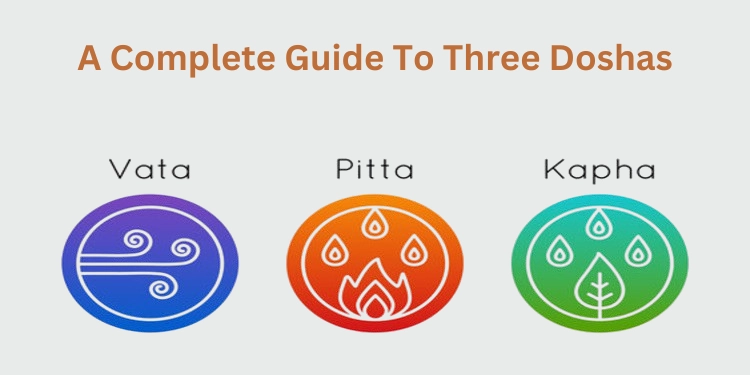The practice of yoga has existed for thousands of years and is an exercise for the mind and body. The practice incorporates physical poses, breathing exercises, as well as meditation sometimes and they all help to enhance your health and wellness. Numerous varieties of yoga exist, with every kind having its distinctiveness. This blog will discuss nine types of yoga that are popular among people, thereby enabling you to know why these types are unique and what is the importance of practicing them in your life. When you’re new to yoga or want to try something else, this guide will be useful in selecting an appropriate style for yourself.
Hatha Yoga is a great starting point if you’re new to yoga. It focuses on basic poses and breathing exercises that help connect your body and mind. In a Hatha Yoga class, you'll do different poses slowly and hold them for a while, which helps you build strength and flexibility. The pace is slower, so it's good for beginners or anyone wanting a more relaxed practice.
Hatha Yoga is also flexible and can easily be used as a foundation for more active yoga styles later on. If you want to relax and de-stress, Hatha Yoga’s gentle approach is ideal for helping you unwind and find calm.
Vinyasa yoga, also known as "flow yoga" or "vinyasa flow," is a popular style that connects your breath with smooth, continuous movements. A good example for beginners is the 3-week yoga retreat’s flow yoga. This style evolved from the more structured Ashtanga practice a few decades ago. The term “vinyasa” means “placing in a special way,” and it often refers to the way breath and movement are linked.
According to Sherrell Moore-Tucker, RYT 200, Vinyasa flow involves syncing poses with your breath in a continuous, rhythmic movement. Even though you’re constantly moving, the flow can be calming and meditative, helping to relax your mind and nervous system.
Vinyasa yoga is great for both newcomers and experienced practitioners, offering a versatile practice that can adapt to various skill levels.
If you like routine and structure, Ashtanga yoga might be for you. It uses a set sequence of poses that you do in the same order every time. This consistent approach helps you track your progress and improve your practice over time.
Ashtanga yoga is a traditional form of yoga that follows a specific sequence of postures, combined with deep breathing. This practice creates heat within the body leading to perspiration that helps cleanse muscles and internal organs; thus, it also promotes blood circulation while making the body stronger and easing tension in the brain. Ashtanga is broken down into six levels whereby each level becomes more difficult than the former one. The primary series as beginners starts with cleansing of the body by focusing on improving postures before advancing into other progressive stages.
Bikram Yoga, developed by Bikram Choudhury, is a type of hot Yoga that involves performing 26 postures and two breathing exercises in a room heated to about 105°F (41°C) with 40% humidity. The heat helps you stretch more deeply, lowers the chance of injury, and helps detoxify the body through sweating.
Every class follows the same sequence, working on every part of the body to provide a full workout that builds strength, flexibility, and stamina. While the hot environment and strict routine of Bikram Yoga can be tough, they offer special benefits like better heart health, improved muscle tone, and weight loss.
Iyengar Yoga is a practice that focuses on alignment, precision, and the use of props for people who value attention to detail. This yoga method, developed by B.K.S. Iyengar, is ideal for anyone who wants to heal from injuries, reduce chronic pain, or enhance their posture.
It allows you to explore the subtleties of each posture by holding poses for longer periods. Blocks, belts, and bolsters are examples of props that are frequently used to assist in achieving proper alignment and modifying poses to suit individual abilities. Because it can be modified to fit practitioners of all levels, including those with physical disabilities, Iyengar Yoga is therefore very accessible.
Kundalini Yoga is a special kind of yoga that helps you discover your inner power. People believe there's energy at the bottom of your spine that can be awakened. It uses special poses, breathing, chanting, and thinking quietly to wake up this energy. It can make you feel really good physically, mentally, and emotionally.
This type of yoga is for people who want to connect with something bigger than themselves and learn more about their spirit. It can also help you feel calmer and more creative.
It is a calm and reflective type of yoga focused on restorative stretching and relaxation. It does not concentrate its efforts on the muscles as more other yogas do but on connective tissues such as ligaments, bones, and joints. While practicing it, positions are held for longer durations, normally ranging from three to five minutes enabling a deeper stretch and release of tension.
This form of yoga aims at increasing flexibility, improving blood circulation and calming down nerves. It helps in building patience and mindfulness since extended poses require you to be steady and focused. Accordingly, Yin Yoga aligns your energetic practices that stress your mental health, hence acting as a stress reliever.
Restorative yoga is a slow and gentle form of yoga that uses props to support the body in positions of comfort and ease. The goal is to sink into the poses without strain, relying on gravity and deep relaxation to bring about an opening in the body. This style of yoga emphasizes relaxation, renewal, and healing, with poses held for longer periods, usually up to 10 minutes.
Restorative Yoga is especially helpful for people recovering from injuries, dealing with stress, or looking for a calming and therapeutic exercise. It promotes deep relaxation, lowers stress, improves sleep, and increases flexibility without the intensity of more active yoga styles.
Power Yoga is a vigorous, fitness-based approach to vinyasa-style yoga that emphasizes strength, flexibility, and perpetual movement through flowing postures. While the inspiration from Ashtanga Yoga is clearly evident, it has no fixed sequence of poses. Each power yoga class could vary, but you can expect to find fluidity in transitions from pose to pose instead.
This form, also practiced in a heated room, allows muscles to stretch more easily and releases impurities through sweating. Power yoga is for people looking to tone up and build muscle while continuing to perfect their flexibility with a twist on traditional yoga fitness.
The world of yoga is very versatile and this means that each type has its own set of advantages for the individual requirements and preferences. We hope that this blog has given you some insight into the different kinds of yoga so that you can decide which one suits you best. The right choice of a style in yoga will be sure based on what every sort offers, thinking about your purposes and body condition, attempting them out in various ways, and listening to what agrees with your mind and body. In conclusion, it should be remembered that finding a perfect individual style of practice is always an ongoing journey.
What is the best type of yoga for beginners?
Hatha Yoga is often recommended for beginners due to its slow pace and focus on basic poses and breathing techniques.
Which type of yoga is best for weight loss?
Vinyasa Yoga and Power Yoga are both great for weight loss as they involve dynamic movements that burn calories and build strength.
Can yoga help with stress relief?
Yes, practices like restorative yoga, yin yoga, and hatha yoga are particularly effective for reducing stress and promoting relaxation.
What is the difference between Hatha and Vinyasa Yoga?
Hatha Yoga focuses on holding poses for longer periods, while Vinyasa Yoga involves flowing from one pose to another in sync with your breath.
How often should I practice yoga to see results?
To see the benefits of yoga, it's recommended to practice at least 3 to 5 times a week. Consistent practice will help improve flexibility, strength, and mental well-being. However, even practicing a few times a week can still offer noticeable benefits.

Stress and Anxiety Treatment

Explore effective Ayurvedic treatments for stress and anxiety, including natural remedies, personalized therapies, and lifestyle practices that promote mental well-being and holistic health.
Vata Pitta and Kapha Doshas

The three doshas in Ayurveda are Vata, Pitta, and Kapha, shaping our physical, mental, and emotional health. This guide explores their traits, significance, and tips for maintaining balance naturally.
Ayurvedic Psoriasis Treatment

Ayurvedic treatment for psoriasis focuses on holistic healing through herbal remedies, detox therapies, and lifestyle changes. This natural approach helps manage symptoms, reduce flare-ups, and promote long-term skin health and overall well-being.
Contact us today and embark on a journey toward a better life. Our team is here to support you every step of the way.
